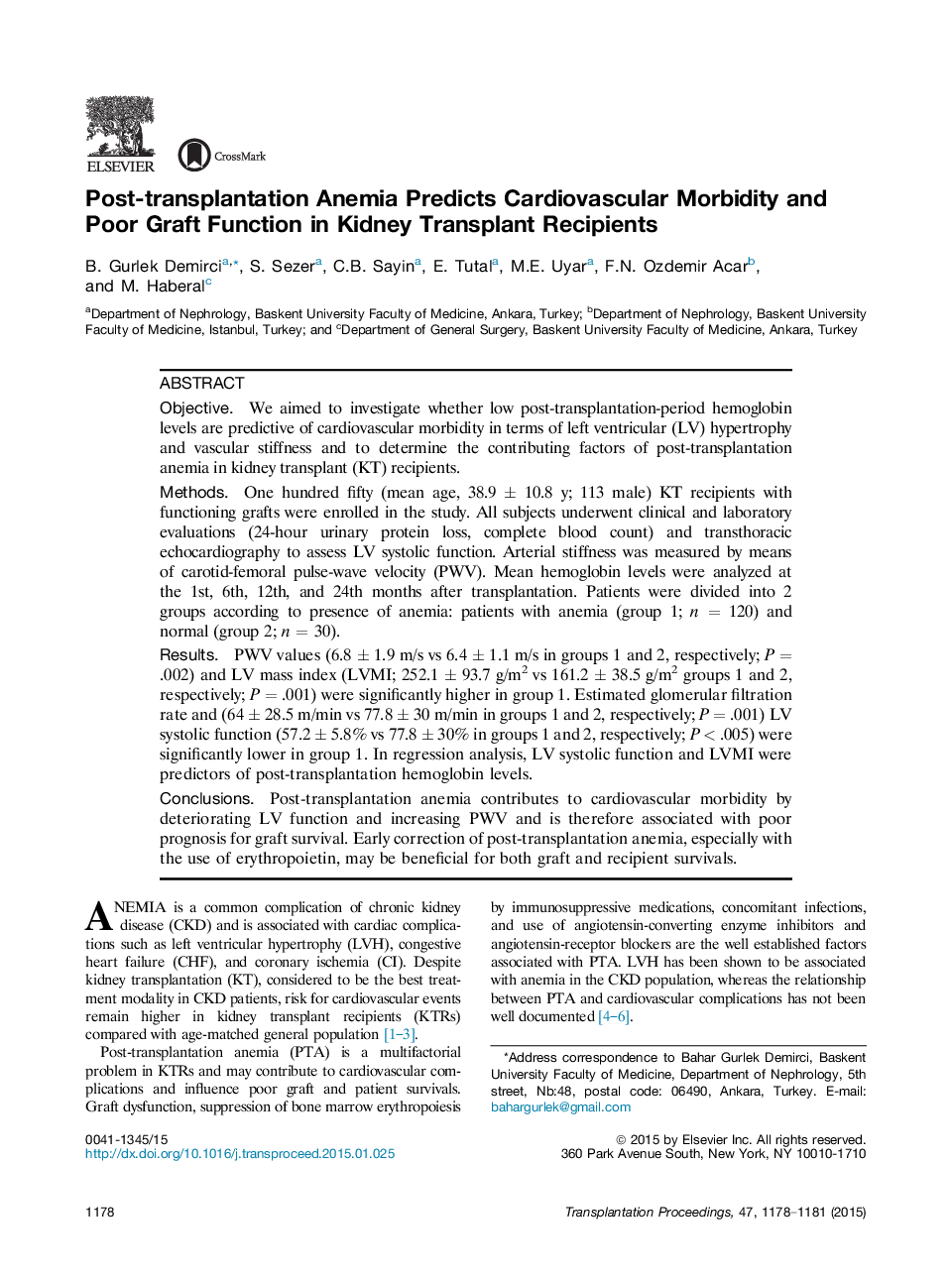| Article ID | Journal | Published Year | Pages | File Type |
|---|---|---|---|---|
| 6247518 | Transplantation Proceedings | 2015 | 4 Pages |
â¢Renal transplantation, post-transplantation anemia, arterial stiffness, graft function.â¢The present study aimed to determine the contributing factors with post-transplantation anemia in kidney transplant (KT) recipients.â¢We concluded that post-transplantation anemia contributes to cardiovascular morbidity by deteriorating left ventricular function and increasing PWv and associated with poor prognosis for graft survival.
ObjectiveWe aimed to investigate whether low post-transplantation-period hemoglobin levels are predictive of cardiovascular morbidity in terms of left ventricular (LV) hypertrophy and vascular stiffness and to determine the contributing factors of post-transplantation anemia in kidney transplant (KT) recipients.MethodsOne hundred fifty (mean age, 38.9 ± 10.8 y; 113 male) KT recipients with functioning grafts were enrolled in the study. All subjects underwent clinical and laboratory evaluations (24-hour urinary protein loss, complete blood count) and transthoracic echocardiography to assess LV systolic function. Arterial stiffness was measured by means of carotid-femoral pulse-wave velocity (PWV). Mean hemoglobin levels were analyzed at the 1st, 6th, 12th, and 24th months after transplantation. Patients were divided into 2 groups according to presence of anemia: patients with anemia (group 1; n = 120) and normal (group 2; n = 30).ResultsPWV values (6.8 ± 1.9 m/s vs 6.4 ± 1.1 m/s in groups 1 and 2, respectively; P = .002) and LV mass index (LVMI; 252.1 ± 93.7 g/m2 vs 161.2 ± 38.5 g/m2 groups 1 and 2, respectively; P = .001) were significantly higher in group 1. Estimated glomerular filtration rate and (64 ± 28.5 m/min vs 77.8 ± 30 m/min in groups 1 and 2, respectively; P = .001) LV systolic function (57.2 ± 5.8% vs 77.8 ± 30% in groups 1 and 2, respectively; P < .005) were significantly lower in group 1. In regression analysis, LV systolic function and LVMI were predictors of post-transplantation hemoglobin levels.ConclusionsPost-transplantation anemia contributes to cardiovascular morbidity by deteriorating LV function and increasing PWV and is therefore associated with poor prognosis for graft survival. Early correction of post-transplantation anemia, especially with the use of erythropoietin, may be beneficial for both graft and recipient survivals.
